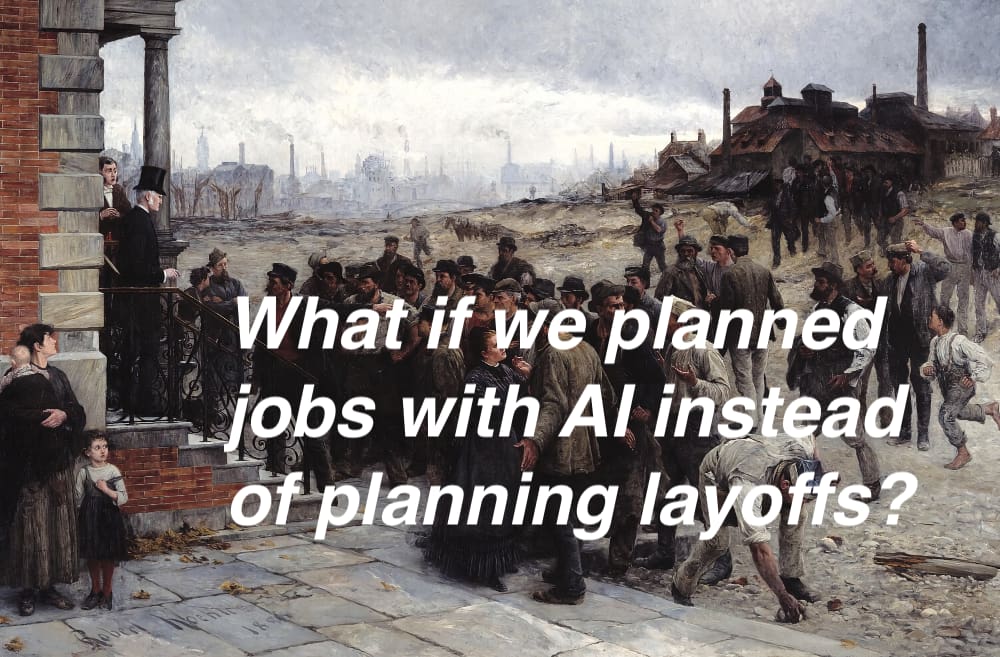A strategic perspective
The AI workforce transformation is using advanced technology to reproduce outdated patterns – when will we innovate how we think about work?
According to the World Economic Forum’s latest report, we’re about to ‘optimise’ 92 million people out of their jobs by 2030. It’s a peculiar achievement – using some of the most sophisticated technology ever created to figure out how to make people redundant. We’ve become masterful at using intelligence to plan unemployment.
The mathematics of contradiction
The numbers tell a fascinating story of systemic contradiction. While planning to eliminate 92 million jobs globally, developed economies are simultaneously facing a critical shortage of workers. In Japan, 69% of employers are losing sleep over not having enough workers by 2030. German and Australian companies are scrambling to fill positions in a shrinking labour pool.
Consider the paradox: In one conference room, executives discuss automating jobs to drive ‘efficiency.’ Next door, another team panics about labour shortages. In Eastern Asia, companies accelerate automation to cope with declining working-age populations, while in Sub-Saharan Africa, a youth bulge enters a job market that’s busy automating entry-level positions.
The technological transformation dilemma
The transformation numbers reveal even deeper contradictions. While 86% of employers are excited about AI transforming their business, 63% admit they have no strategy for addressing the resulting skills gap. We’re like children with a new toy who haven’t read the instruction manual – eager to play but unsure what buttons do what.
The irony deepens when you realise that we’re using AI to eliminate jobs that require human skills – creativity, empathy, care – while creating jobs that essentially require humans to think more like machines. We’re telling bakers, nurses, and carpenters they need to become data scientists, while simultaneously using AI to eliminate jobs that require human judgment and creativity.
Reimagining workforce transformation
What if we approached this global workforce transformation not as an AI-driven inevitability, but as a deliberately designed future? One where we use AI as a tool for human flourishing rather than human replacement.
Consider how this might work in practice:
- Instead of using AI to calculate job cuts, use it to map possible futures for each affected worker
- Rather than replacing workers with robots, design hybrid workflows where humans and machines complement each other
- Use AI to enhance and elevate traditional roles instead of replacing them
- Create collaboration models where experience and innovation flow between regions with different demographic challenges
The strategic imperative
The World Economic Forum tells us that 59 out of 100 workers will need training by 2030. But who’s designing this training? And more importantly, who’s deciding what they’re being trained for?
The same report warns that skills gaps are the biggest barrier to business transformation, cited by 63% of employers. Perhaps these gaps exist because we’re trying to force people into roles they never chose, instead of helping them evolve in directions that match their interests and abilities.
A new approach to workforce evolution
At Liminal, we believe the future of work isn’t a technological inevitability – it’s a design choice. Our approach focuses on:
- Using AI as a bridge-builder rather than a job-destroyer
- Designing transition pathways that enhance human capabilities
- Creating hybrid systems that leverage both human and machine intelligence
- Developing strategies that address demographic challenges through collaboration rather than competition
Moving forward
The absurdity of our current trajectory becomes clear when we step back and look at the whole picture. We’re using the most advanced technology ever created to reproduce the same patterns that led us to our current challenges. When will we realise that the real innovation isn’t in eliminating jobs, but in reimagining how we work?
Ready to explore how your organisation could approach this differently? Contact us about thriving in liminality.
Originally published on LinkedIn. Read Frank’s perspective on workforce transformation and join the discussion.

